

First come with me to the antiquarian book show, a place were serendipity is king. Together we shall relish the hunt, and admire the worn sheen of many a forgotten volume. “Please this way, so I can explain myself.”
The cook book pox has me, and I am jonesing for my next fix. Strange fever. What is it about cookbooks, why do I need another? Like the squirrels who endlessly collect and plant acorns about my yard, securing a future meal, such is my quest for another cookbook. A stash of reference purchased at random for a fantasy banquet, a banquet I will more than likely never prepare. The flags of sprouting young oaks about the lawn are reminders of forgotten acorns, forgotten volumes, cook books that have not served up one thin strand of pasta. So I ask myself, is more better or have I been amassing a reference library for a future celebrity chef, another Antonin Careme perhaps?
We exit the book fair and I proudly pull from my sack a fat five pound cook book. “Look at this! An affordable fifteen bucks”, I declare. “The Gold Cook Book” by Louis P. De Gouy, revised edition, copyright 1949. True to its name the cover is a beat up metallic gold colour. I think now that out of the thousands of books on display I was chosen by this one, musing, I enter into a new relationship with my golden prize.
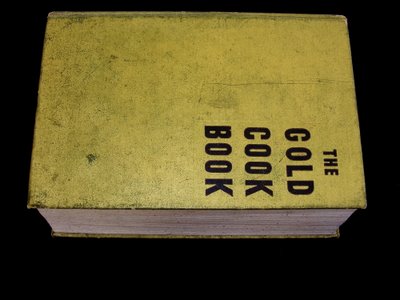
It is now sunday morning. My first thought was to check out the chapter on poultry. Chicken being some what of an sunday tradition, as well as providing monday night leftovers, seemed to me the right place to start reading. My first impression - Chef Louis has not only put together a massive volume of well organised recipes but reveals himself as an accomplished writer. The text is clear and incisive with an interest of history, humour and trivia. For example his recipe for “Brunswick Stew Of Old Dixie” (in the poultry section) starts out with this introduction-
“Note: After it is all said and done, squirrel meat must have a big part in the pot.”
He then continues by painting a verbal picture of southern hospitality and how this stew plays a major role in any gathering were food is served. He explains that the mention of chicken in this recipe stirred up more than stew when first released (in 1947). Admitting this oversight, Chef Louis revised this introduction to quell his ridicule, and satisfy the historical underpinnings that makes this dish so famous.
It must be remember that in the late 40s America was beginning to live the good life now that the war was over. Along with returning troops came the taste of foreign lands. The demand for the new tastes was answered in part by the chefs assembling cookbooks. In the “Gold Cook Book “ Chef Louis is generous in providing explanations and references, for both the familiar and exotic. His inclusion of a “personal-historic context” makes this a fascinating cook book.

Back to sunday morning. As I continue to thumb my way through the poultry section I am confronted with a most unusual recipe, “Burnt Chicken Princess”. I am strangely excited, as if I am a conquistador laying eyes on the fabled city of gold “El Dorado”. .....I must know this taste! I must make this chicken! What does the recipe title mean! An exotic blend of spirits dominates this princess, yes the princess and I will drink and burn together. Now is the time, Louis P. De Gouy has summoned me into a action. Wait a minute, its only chicken. I decide that I must be committed so I head for the liquor store where I drop sixty eight bucks on the necessary booze. The recipe calls for yellow Chartreuse, but green is all they have, the clerk assures me their is no difference in taste. I read to him from the back of the bottle, “the yellow is milder and sweeter than the green.” He replies with the same information, “ they taste the same”. I want to burn the princess and not spend my day driving so I compromise and buy the green Chartreuse. I also need gin so I choose “Bombay Dry Gin” based entirely on the bottle’s aesthetic presentation. Fortunately we have the rum at home.
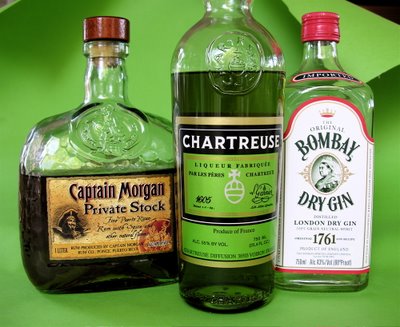
Back home a fissure opens in my brain and out grows an oak tree, I remember a recipe for green Chartreuse sorbet. More cookbooks are better and this one happens to be Paula Wolfert’s timeless classic “The cooking of South-West France”. My dinner preparation starts with the sorbet.(recipe below)

Green Chartreuse Sorbet
Adapted from a recipe by Paula Wolfert
serves 10
Begin 1 day in advance ( this is better if made several days in advance as flavors meld)
1) Dissolve sugar in 4 cups water over medium heat, stirring. If sugar crystals appear on the inner sides of the pan, brush down with a brush dippedin cold water. Boil undisturbed 5 minutes. Remove from heat. Cool slightly then add the Chartreuse. Cool completely.
2) Combine syrup, fruit juices
3) Pour into a metal loaf pan and set in freezer compartment until mixture is slushy but beginning to set around inside rims, about 2 hours. Beat with an electric mixer until smooth and return to freezer until almost frozen. Repeat beating after 2 hours. Stir in cream, and freeze until firm.
4) Pack into a freezer container. Cover and allow mixture to ripen overnight, or a day or two more.
Note: If the sorbet crystallizes, thaw slightly then beat in a food processor until smooth. Refreeze. It is nice to serve with a shortbread, or waffle cookie.
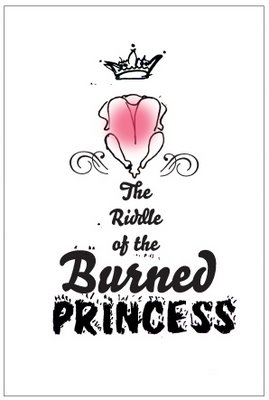 Burned Chicken Princess
Burned Chicken PrincessWash three 2-pound broilers inside and out with warm water and soda ( 1/2 teaspoon soda to each quart water), rinse well with cold running water, and singe. Sponge the broilers dry; rub with butter seasoned with salt and freshly ground black pepper, and roast in the usual way after placing in each cavity I small white onion stuck with a whole clove, 2 thin carrot slices, I small piece celery stalk, 2 sprigs parsley, a bit of bay leaf, and a tiny sprig of thyme.
When the chickens are done, remove from the oven, and split in two from the back. Discard the herbs in the cavity, and bring the chickens to the table on a very hot platter, which must be kept hot. In the top part of the chafing dish pan, which should not be over water, heat 3/4 pound best sweet butter; add I teaspoon each finely chopped tarragon, chives, shallots, parsley, chervil, sweet summer savory, and celery tops. Let these cook for 2 or 3 minutes; then add 3/4 pound fresh mushrooms using both caps and stems, -peeled and thinly sliced, and cook 5 or 6 minutes longer, stirring gently but thoroughly.
Now place in a soup ladle 2 tablespoons each of fine rum, gin and yellow Chartreuse. Dip a lump of sugar into the rum; light the rum, and add it to the liqueur mixture in the ladle, which will burn. Pour the flaming mixture on the contents of the chafing dish pan until the liqueur is completely burned. Then pour this sauce over the chicken, and serve at once.
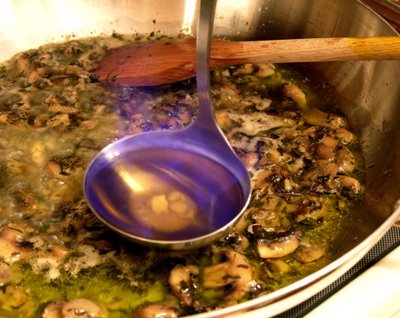 I did use green Chartreuse instead of yellow in my preparation of “Burnt Chicken Princess.” Otherwise the recipe needs no help and I refuse to dampen your technique with petty nuances.
I did use green Chartreuse instead of yellow in my preparation of “Burnt Chicken Princess.” Otherwise the recipe needs no help and I refuse to dampen your technique with petty nuances. “Burnt Chicken Princess?” Within the grand dining hall the seated guest look puzzled and somewhat apprehensive. The question on their lips is not what is in the sauce but what is in the name. I still ponder this improbable recipe title. Was the chicken a princess scratching about the barn yard waiting to be kissed? The flambé if presented on a silver chafing dish at the dining table may have impressed a child princess. But on what account would a cook in his right mind proclaim to a princess and her entourage of guests,“the chicken has been burnt.” No, Louis does not bare a thread of information alluding to the title, but ends the recipe with a seemingly unrelated three line paragraph of trivia, and I Quote;
“Francis Bacon was an epicure as well as a literary figure. An early experimenter with refrigeration, he is supposed to have died from a chill caught while stuffing a fowl with snow.”
My plan is to ask the sphinx.
The film stills of the woman with a chicken lodged on her tiara are from the 1960's movie titled “The Party” starring the hilarious Peter Sellers as an univited party guest.
Related Tags: cook book, the gold cook book, loui p de gouy, chartreuse, paula wolfert, the cooking of south-west france, sorbet, burned chicken princess, chicken, the party


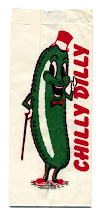




4 comments:
Applause!
Bravissimi, Polly & Dieter!
What a tremenous post. The food is mouth-wateringly beautiful. And your sentiments about cookbooks and what they mean to us is spot-on.
I love every one of my cookbooks. Seriously. When I'm feeling down or having a bad day, I will flip through a cookbook and feel better.
Thank you for sharing your love of books!
i have a sad cookbook addiction, too. unfortunately, i read them over and over but never seem to cook much from them! haha!
my grandmother has an OLD cookbook that is a favorite of mine--it has, among many strange recipes, a recipe for "boiled calf head" which tells you how to remove and boil a baby cow's head! delectible! ;)
Danitee, Thanks for the feed back, we don't receive many comments so we truly appreciated hearing your thoughts. Some of my favorite cooks books are the old ones as they provide an insight into the not so distant past. I also think some of the food magazines are a good resource and providing the look (pictures) of how things should be when properly done. I find many unexpcted delights by just trying something
new, so take heart, fire up the oven and plunge in to your cook book collection. Sincerely Dieter and Polly
Morning, Polly and Dieter...sitting out in our first Oregon rain...under our Airstream's awning...lovely...so excited to have a comment from you guys on our blog...love your Second Helping House...we would love to contribute some campfire cooking from Oregon to your posts...with photos...how do we do that?
Post a Comment